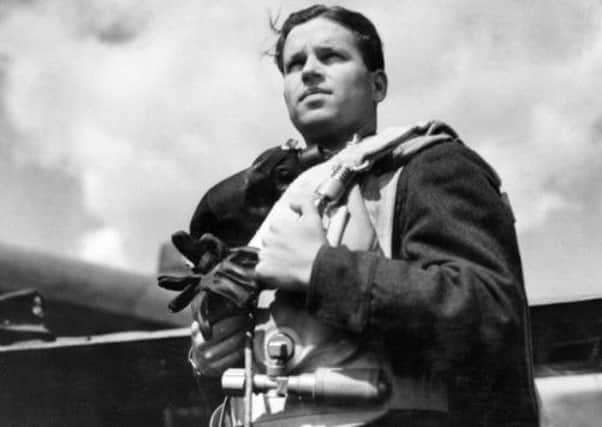Malcolm Barker: Squadron that flew into the history books


In the early hours of the next day they delivered a devastating attack on the Third Reich, a coup de main that must have delighted Winston Churchill.Throughout his distinguished life, he had relished and advocated sudden and unexpected assaults on England’s enemies.
Of the 19 aircraft that reached their targets, eight were lost, along with 53 of the 56 men in their crews, but the survivors arrived home in triumph – job done – and went into history as the Dambusters.
Advertisement
Hide AdAdvertisement
Hide AdUsing bouncing bombs developed by Barnes Wallis (later knighted), they had breached two dams and released torrents of water that wrought havoc in the heavily industrialised Ruhr. Twenty-five bridges were destroyed and 21 damaged. Twenty-five factories were ruined or flooded, and many coalmines, waterworks, pumping stations and power stations rendered unworkable. Casualties on the ground numbered about 1,300.
The RAF’s exploit demonstrated that Barnes Wallis’s ideas had astonishing destructive potential, and thereby contributed to the future conduct of the war. Air Chief Marshal Sir Arthur Harris, “Bomber Harris”, who had initially opposed the development of the bouncing bomb, told its inventor: “Now you could sell me a pink elephant.”
Instead the inventor came up with Tallboy, a 12,000lb bomb that spun as it fell, giving it great accuracy as well as penetrative power. Such weapons could have much the same effect on a target as a localised but violent earthquake. The first one was dropped in France two days after D-Day in June, 1944, and caused the collapse of the Saumur railway tunnel in the Loire Valley, hampering German moves to get reinforcements and supplies to troops attempting to contain the Allied bridgehead in Normandy.
The accuracy of bomb-aiming achieved by 617 Squadron caused “Bomber” Harris to entrust it with the delivery of the majority of these devastating missiles.
Advertisement
Hide AdAdvertisement
Hide AdThis meant that the Dambusters eventually joined the efforts to contain, or at best destroy, the vessel termed by Churchill “The Great Beast”, the 42,900-ton Nazi battleship Tirpitz, launched in 1941 and provided with a main armament of eight 15-inch guns. She did not see much action, but her very presence, lurking in Norwegian waters, meant she was a constant threat to the Arctic Convoys of heavily-laden merchantmen trudging slowly north towards Archangel or Murmansk with equipment for the Russian war effort.
Intelligence that Tirpitz and other warships had left their Norwegian bases caused the Admiralty to withdraw escort cover from Convoy PQ17 in July, 1943, and order the merchantmen to scatter. Lacking the protection of escorts, they were hunted down by the Luftwaffe or U-Boats, and only 11 ships survived of the 35 that initially comprised the convoy. Tirpitz went back to her lair, not having had to fire a shot from her daunting guns. Just being at sea had been enough.
Plainly, her destruction was of the highest priority. This brought into close relationship two groups of men who have recently (and most belatedly) been issued with medals for service during the war, aircrew of Bomber Command and the Arctic sailors of the Royal Navy and Merchant Marine.
The former were to revenge the latter, for Barnes Wallis deemed his Tallboy capable of penetrating Tirpitz’s armour-plating, and so it proved.
Advertisement
Hide AdAdvertisement
Hide AdThree times Lancasters of 617 and 9 Squadrons attacked the battleship, and on the third occasion, on November 12, 1944, “The Great Beast” was mortally wounded and turned turtle. Both squadrons hit the target, but a 9 Squadron Lancaster, piloted by Flying Officer Dougie Tweddle DFC, is credited with delivering the coup de grace.
The Dambusters could concede the honour with good grace. They had triumphs in plenty, and their deeds were recorded in a best-selling book, Paul Brickhill’s The Dam Busters, and a 1954 film. More recent is The Dambusters by John Sweetman, a book based on diligent research and interviews with survivors.
One of the war’s most extraordinary secrets, disclosed only in 2010, involved a plan for 617 Squadron to assassinate Mussolini, the Italian Duce. According to the Squadron web-site, it had been cooked up by Air Marshal Harris, who was plainly impressed by the precision of the Dambusters’ bombing. The idea was to make simultaneous low-level attacks on the dictator’s home and office in the Palazzo Venezia in central Rome.
Reporting on the plan, the Foreign Secretary, Anthony Eden, declared that neither target was within 1,500 yards of the Vatican, which the Allies had promised would remain unscathed.
Advertisement
Hide AdAdvertisement
Hide AdPerhaps fortunately, Mussolini was deposed before this scheme could be put into effect. Otherwise the Dambusters might have had yet more justification for the slogan on their crest, Apres moi le deluge, for surely an aerial assault on Shakespeare’s “high and palmy state” would have unleashed worldwide shrieks of protest.
The air aces of 617 Squadron
THE Dambusters of 617 Squadron had a succession of distinguished commanding officers. The dam raid itself was led by Guy Gibson (1918-1944) who was awarded the VC, and was shot down and killed over Germany in September 1944, aged 26. Astonishingly, a team competing in a recent edition of the BBC TV Eggheads quiz had never heard of him.
Among his successors at 617 was Leonard Cheshire (1919-1992) who developed high target-marking skills, improving even on those of the Pathfinders. He, too, was awarded the VC, and went on to form the Cheshire Foundation for the incurably sick, and to be created Baron Cheshire.
In command at the time of the Tirpitz raid was James B “Willie” Tait (1918-2007) who, during a remarkable career, was awarded the DSO and no fewer than three bars. He also specialised in low-level target-marking, and stayed on in the RAF after the war, retiring as a Group Captain in 1966.